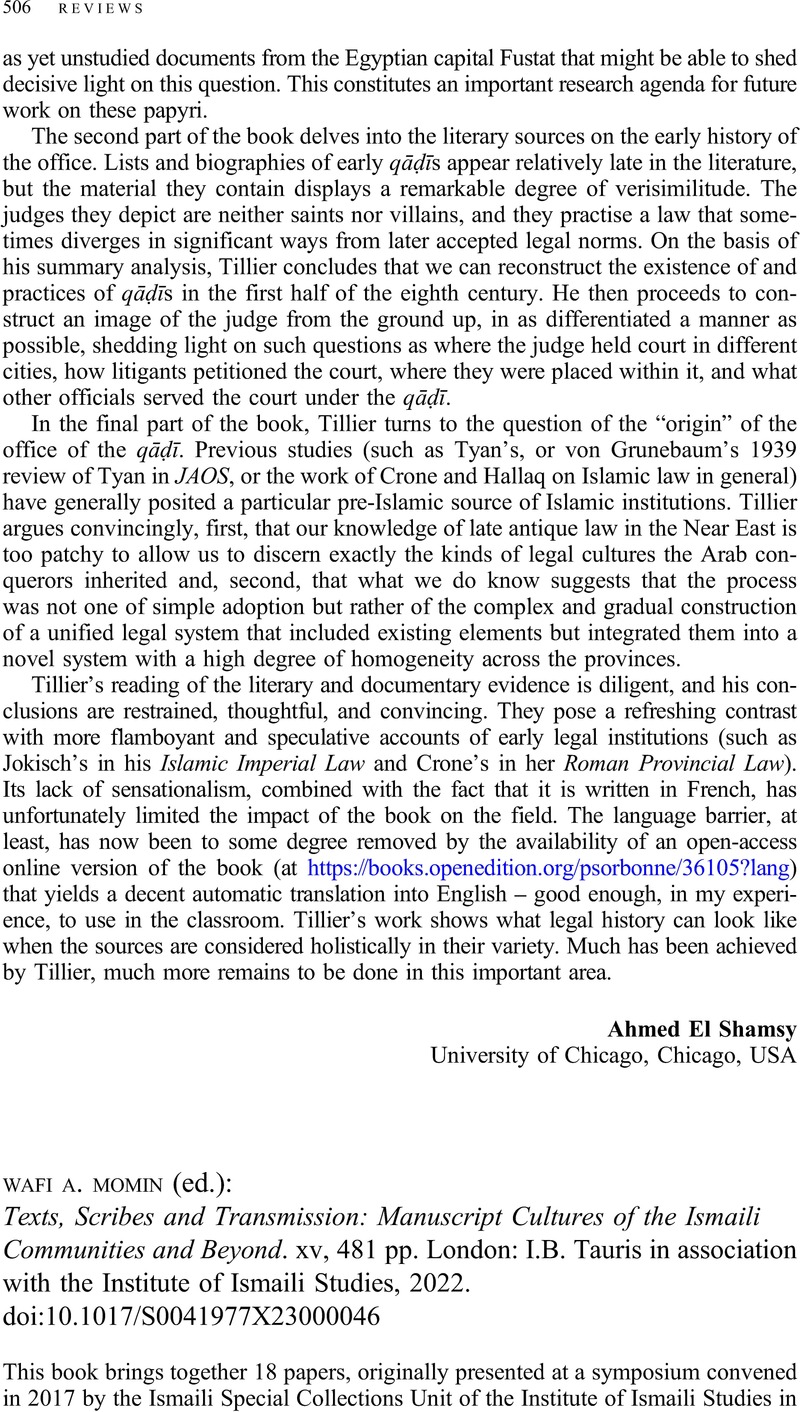No CrossRef data available.
Article contents
Wafi A. Momin (ed.): Texts, Scribes and Transmission: Manuscript Cultures of the Ismaili Communities and Beyond. xv, 481 pp. London: I.B. Tauris in association with the Institute of Ismaili Studies, 2022.
Review products
Published online by Cambridge University Press: 07 March 2023
Abstract

- Type
- Reviews: The Near and Middle East
- Information
- Copyright
- Copyright © The Author(s), 2023. Published by Cambridge University Press on behalf of SOAS University of London



